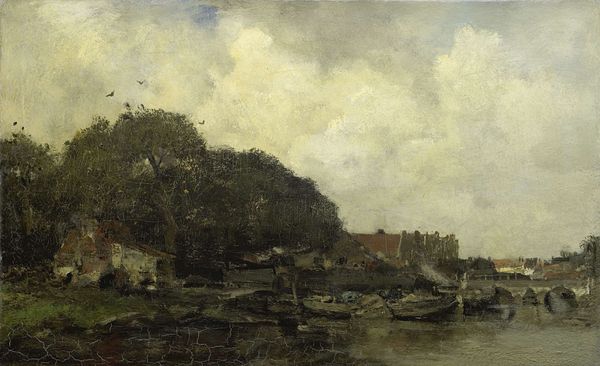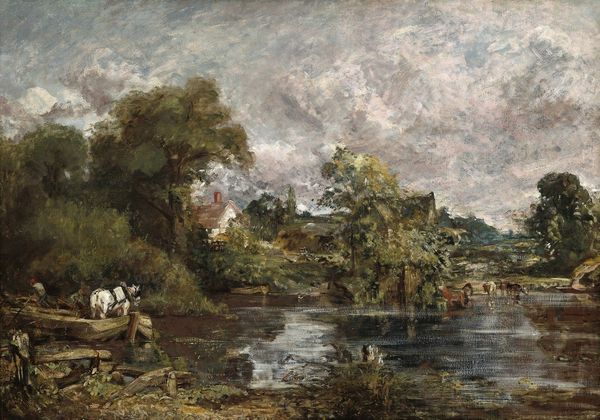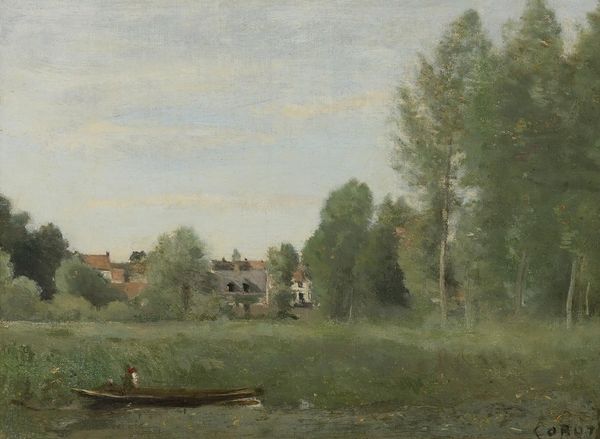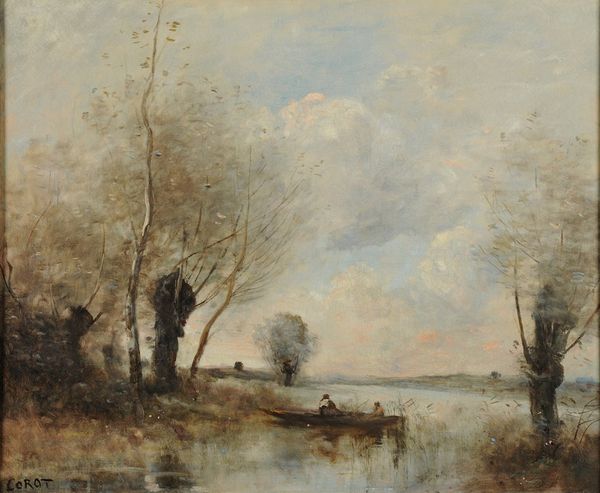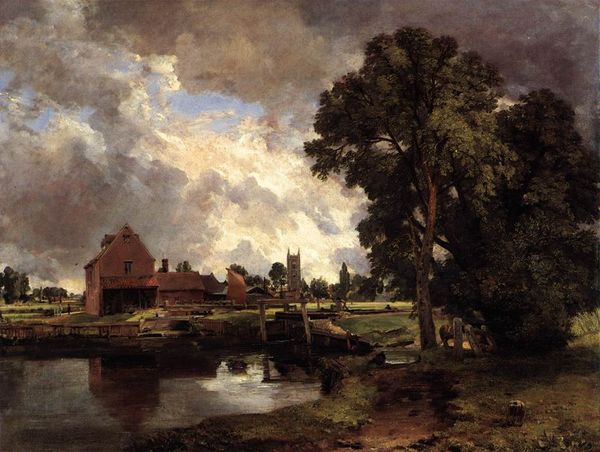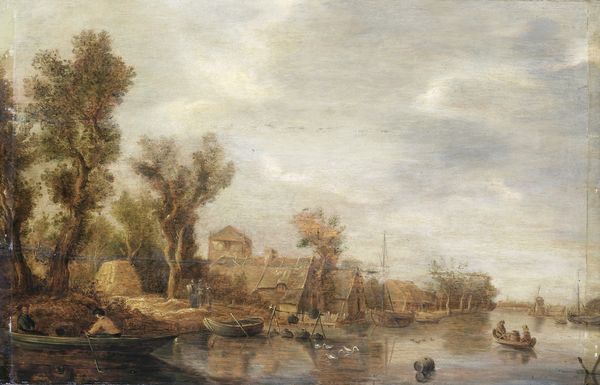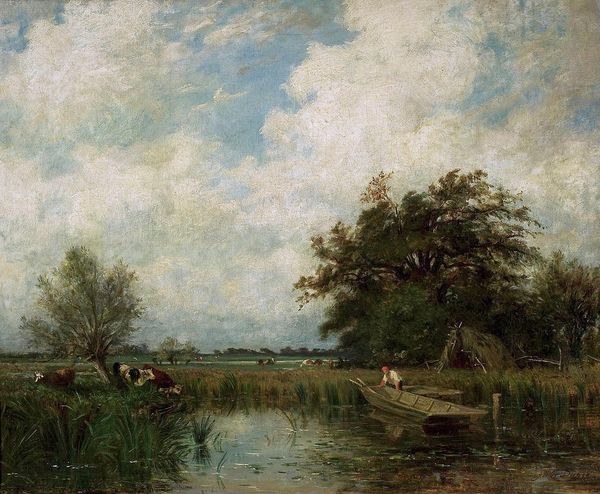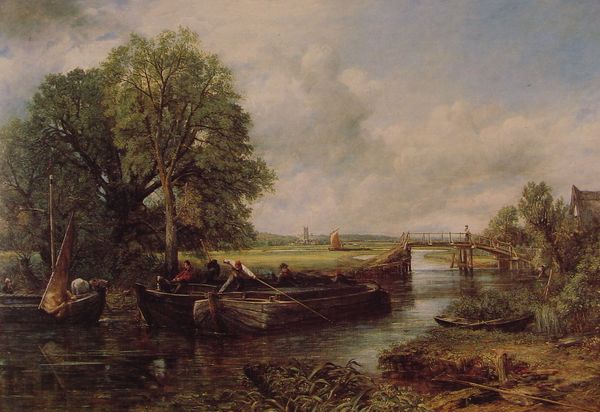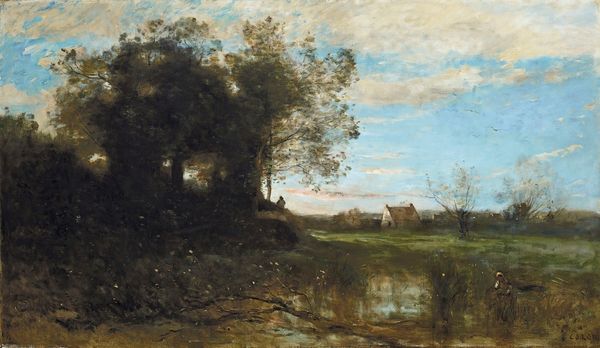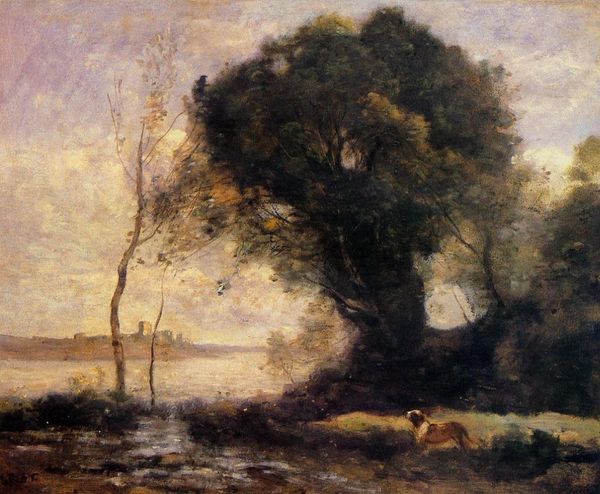
Copyright: Public Domain: Artvee
Johan Barthold Jongkind painted this oil on canvas, *Environs of Breda,* in 1857. Your eye might be drawn to the rustic charm of the thatched-roof building, the majestic tree reflected in the tranquil water, or the soft, muted color palette, all of which combine to create a harmonious landscape. However, beyond its picturesque qualities, the painting's real power lies in its formal structure. Jongkind uses loose, fluid brushstrokes to capture the scene's essence, focusing on the interplay of light and shadow rather than precise detail. This emphasis on atmospheric effects and painterly technique aligns with the shift toward Impressionism. The composition is carefully balanced, with the building and tree acting as anchors on either side of the canvas, connected by the sinuous curve of the waterway. This formal arrangement invites us to consider the relationship between nature and civilization, or perhaps, the transient beauty of the Dutch landscape. This work is not just a visual record but an exploration of the painterly medium itself.
Comments
No comments
Be the first to comment and join the conversation on the ultimate creative platform.

